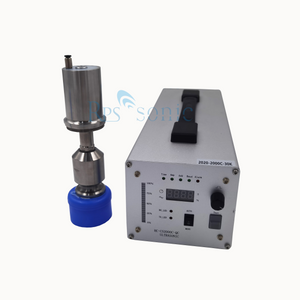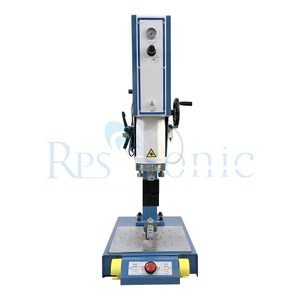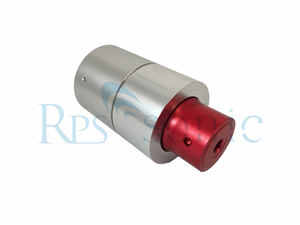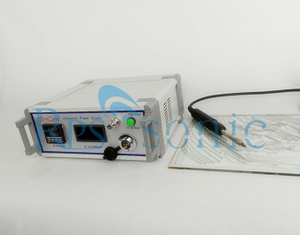Application of ultrasonic welding in wire harnesses
We will delve into the application of ultrasonic welding in wire harnesses made of three specific metals: copper, aluminum, and nickel. These three metals are among the most commonly used conductors in power electronics, but their physical and chemical properties differ significantly, resulting in distinct welding characteristics.
Overview: Ultrasonic metal welding, as a solid-state joining technique, is ideally suited for joining highly conductive soft metals such as copper, aluminum, and their alloys. Nickel, as a common plating or functional material, is also frequently welded.
item | Copper, | Aluminum | Nickel |
Solderability: | Excellent, | Good | Difficult |
Main challenges | High hardness, relatively dense oxide layer | The oxide layer is very hard and insulating. | High hardness, high toughness, and stable oxide layer |
Required energy/amplitude | High | Medium | Very high |
Common Applications | Battery, motor windings, electrical wiring | Power battery, aluminum wire harness, solar panel | Battery tabs, cell lead plates, corrosion-resistant connectors |
I. Ultrasonic Copper Wire Harness Welding
Copper is one of the most ideal and widely used materials for ultrasonic welding.
Welding Characteristics:
* Excellent Conductivity: The welded joint forms a solderless pure copper connection with low resistivity and superior conductivity compared to tin soldering.
* High Strength: The weld joint exhibits high tensile and fatigue strength.
* Good Plasticity: Pure copper readily undergoes plastic flow under pressure and vibration, which is beneficial for metallurgical bonding.
Key Process Considerations:
* Higher Amplitude and Pressure Required: Copper has relatively high strength and hardness, requiring sufficient energy to break down its oxide layer (CuO, Cu₂O) and induce plastic flow.
* Surface Treatment: While less demanding than aluminum, severe oxidation or oil contamination should still be avoided. Electroplated copper (such as tin or nickel plating) can also be welded, but parameters need adjustment.
* Mold Design: The toothed design of the welding head and lower mold is crucial for gripping force and preventing slippage.
Typical Applications:
* Power Batteries: Copper busbar connections between cells; welding of sampling lines in battery modules.
Automotive Wiring Harnesses: Welding of copper wires inside fuse boxes and relays.
Motors and Transformers: Welding of lead wires from flat copper wire windings.
* High-Frequency Communication Cables: Welding of shielding layers.
II. Ultrasonic Aluminum Wire Harness Welding
Aluminum is increasingly used in lightweight and high-current applications due to its lightweight, low cost, and high conductivity. However, its weldability differs significantly from copper.
Welding Characteristics:
The challenge lies in the oxide layer: A hard and insulating Al₂O₃ oxide film instantly forms on the aluminum surface, with a melting point (approximately 2050℃) much higher than the aluminum substrate (660℃). The "scraping" effect of ultrasonic welding is key to breaking this film.
Low Hardness: Aluminum is relatively soft, requiring precise control of pressure and amplitude to prevent over-welding that could lead to crushing or metal spatter.
Room Temperature Creep: Aluminum solder joints may creep under long-term stress, affecting long-term reliability. This needs to be considered in mold design and pressure settings.
Key Process Considerations:
Amplitude Control is Crucial: Too low an amplitude will not effectively remove the oxide layer; too high an amplitude can easily lead to over-welding and brittle joints.
Precise Pressure is Required: Insufficient pressure will result in incomplete soldering; excessive pressure will break thin wires or cause solder joints to become too thin.
Surface Cleanliness: Extremely high requirements. Oil, moisture, and thick oxide layers will severely affect solder quality and consistency. Dryness and cleanliness are generally required before soldering.
Mold Teeth: Sharper or more specialized teeth are typically used to better grip and break the oxide layer.
Typical Applications:
Power Batteries (Core Application): Connection of aluminum tabs to aluminum busbars in lithium iron phosphate or ternary lithium batteries. This is currently the most important application area.
Automotive Aluminum Wiring Harnesses: To reduce weight, some automotive wiring harnesses are beginning to use aluminum conductors, and their terminal connections are often ultrasonically welded.
Solar Photovoltaics: Welding of aluminum busbars for solar cells. Electronic Products: Such as soldering aluminum foil leads for capacitors.
III. Ultrasonic Nickel Wire Harness Soldering
Nickel is typically not used as the main circuit wire harness, but rather as battery tabs, leads, or plating materials.
Soldering Characteristics:
One of the most difficult materials to solder: Nickel has high hardness, high strength, and good toughness, and its oxide layer (NiO) is also very stable.
High Energy Required: Soldering nickel requires much higher amplitude and pressure (or longer soldering time) than copper and aluminum.
Embrittle Solder Joints: Improper parameters can easily lead to brittle fracture of the solder joint interface, rather than ideal ductile tearing.
Rapid Die Wear: The high hardness of nickel accelerates the wear of the solder head and lower die.
Key Process Considerations:
High Amplitude, High Pressure: Sufficient energy must be provided to overcome the strength of nickel and break down its oxide layer.
Energy Control Mode: Using an "energy mode" rather than a "time mode" ensures better soldering consistency, as small differences in the initial state of the material can have a significant impact on the result.
Strict Parameter Window: The "process window" for welding parameters is narrow, requiring precise adjustment and strict control.
High-Quality Molds: High-strength, wear-resistant materials (such as high-quality mold steel) are required for manufacturing the welding head and lower mold.
Typical Applications:
Battery Manufacturing: Welding nickel tabs or nickel-plated steel strips to wires in certain types of batteries (such as nickel-metal hydride batteries and some lithium polymer batteries).
Corrosion-Resistant Connections: Nickel strips or nickel-plated wire harnesses are used for connections in applications requiring corrosion resistance.
As a Plating: Many copper or aluminum terminals can still be ultrasonically welded after nickel plating, but the parameters need to be re-optimized.
IV. Welding of Dissimilar Materials
A significant advantage of ultrasonic welding is its ability to weld dissimilar metals, which is particularly common in battery manufacturing.
Copper-Aluminum Welding:
Importance: In power batteries, the negative electrode is copper, and the positive electrode is aluminum, requiring the copper busbar and aluminum busbar to be connected together.
Challenges: Copper and aluminum have vastly different physical properties (melting point, hardness, thermal conductivity), and readily form brittle intermetallic compounds (IMCs), such as CuAl₂, at the interface. These compounds severely impact joint performance and long-term reliability in conventional fusion welding.
Advantages of Ultrasonic Welding: The low-temperature process effectively suppresses the formation of large amounts of IMCs, resulting in a stable, low-resistance, and high-strength joint.
Process Considerations: Parameter settings typically fall between those for welding pure copper and pure aluminum, requiring the finding of an optimal balance. Generally, placing the harder material (copper) on the upper die side, utilizing its vibration to impact the softer material (aluminum), yields better results.
Nickel-Aluminum and Nickel-Copper Welding: Similarly, the low-temperature advantage of ultrasonic welding is utilized to avoid the formation of brittle phases.
Material Combination | Recommendation | Key process focus |
Copper-copper | ★★★★★ | Optimize amplitude and pressure to achieve high strength and low resistance. |
Aluminum-aluminum | ★★★★☆ | Precise parameter control ensures effective removal of the oxide layer while avoiding over-soldering. |
Nickel-Nickel | ★★☆☆☆ | High energy input, strict control of process window, and attention to mold wear. |
Copper-aluminum | ★★★★★ | Taking advantage of the solid phase to suppress intermetallic compounds, parameter balance is key. |
Copper-Nickel | ★★★☆☆ | The parameters are biased towards welding copper to ensure sufficient energy is applied to the nickel. |
Aluminum-Nickel | ★★★☆☆ | The parameters are biased towards welding nickel; care should be taken to prevent over-welding on the aluminum side. |
 English
English











